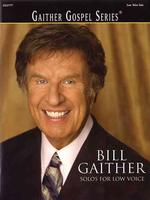- ホーム
- > 洋書
- > ドイツ書
- > Humanities, Arts & Music
- > Music
- > general surveys and lexicons
Description
(Text)
Ein Buch, das Augen und Ohren öffnet für musikalische Zusammenhänge, die vielen Musikfreunden unbekannt sind. Stefan Schaub zeigt einen einfachen Weg, um sich Schritt für Schritt und ohne akademische Mühen auch komplexere musikalische Werke zu erschließen. Dazu werden anhand der Sonatenform bedeutende Sinfonien von Haydn bis Schostakowitsch in verständlicher und nachvollziehbarer Form beschrieben und analysiert. So wird die Musik durch ein bewussteres Wahrnehmen aktiv erlebbar, und das Wissen um Strukturen und Zusammenhänge steigert den Hörgenuss. Weniger ein Lese- als ein Arbeitsbuch, gibt dieses Buch samt der Tonbeispiele auf den beiden CDs vielfältige Anregungen und weckt die Freude am Detail.
(Table of content)
Vorwort - Einleitung - Was ist ein Aktiv-Hörer - Warum die Sonatenform - Geschichte und Modell der Sonatenform - Ist Analyse "erlaubt" - J. Haydn: Sinfonie Nr. 104, 1. Satz - F. Schubert: "Große" C-Dur-Sinfonie, 1. Satz - H. Berlioz: Symphonie fantastique, 1. Satz - R. Schumann: Sinfonie Nr. 1 Frühlingssinfonie, 1. Satz - A. Bruckner: Sinfonie Nr. 4 "Romantische", 1. Satz - J. Brahms: Sinfonie Nr. 4, 4. Satz, Finale - P. Tschaikowsky: Sinfonie Nr. 6 Pathétique, 1. Satz - G. Mahler: Sinfonie Nr. 6, 4. Satz, Finale - Die Sonatenform im Neoklassizismus - Nachwort - Literatur - Glossar - CDs/Klangbeispiele
(Text)
A book which is an eye- and ear-opener with regard to musical contexts unknown to many music lovers. Stefan Schaub shows an easy way of how even complex musical works become accessible step by step and without any academic efforts. Major symphonies from Haydn to Shostakovitch are described and analysed in a clear and comprehensible way, based on the example of the sonata form. Thus, the music can be actively experienced through more conscious perception, and the knowledge of structures and contexts increases the pleasure of listening. Being rather an exercise book than a book for reading, this book including sound examples on two CDs provides many ideas and suggestions, thereby awakening the reader's delight in details.
(Table of content)
Vorwort - Einleitung - Was ist ein Aktiv-Hörer - Warum die Sonatenform - Geschichte und Modell der Sonatenform - Ist Analyse "erlaubt" - J. Haydn: Sinfonie Nr. 104, 1. Satz - F. Schubert: "Große" C-Dur-Sinfonie, 1. Satz - H. Berlioz: Symphonie fantastique, 1. Satz - R. Schumann: Sinfonie Nr. 1 Frühlingssinfonie, 1. Satz - A. Bruckner: Sinfonie Nr. 4 "Romantische", 1. Satz - J. Brahms: Sinfonie Nr. 4, 4. Satz, Finale - P. Tschaikowsky: Sinfonie Nr. 6 Pathétique, 1. Satz - G. Mahler: Sinfonie Nr. 6, 4. Satz, Finale - Die Sonatenform im Neoklassizismus - Nachwort - Literatur - Glossar - CDs/Klangbeispiele
(Author portrait)
Stefan Schaub, geb. 1952, studierte Musikpädagogik und Psychologie und promovierte in Musikwissenschaft.







